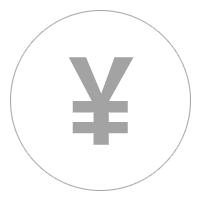Content
Here are just some of the important use cases for calculating your inventory turnover ratio. That said, companies within the same industry can also vary in their turnover rates. Inefficient supply chains, an excessive amount of inventory, and other operational inefficiencies can lead to stagnant, obsolete inventory.
- Ultimately, the longer your inventory sits without moving, the more money you’re losing.
- Some inventory management software can also automatically calculate this for you.
- The right inventory management software gives you real-time visibility into inventory levels across channels, as well as analytics tools and data tracking capabilities.
- For example, Payability provides working capital advances and accelerated daily payments to ecommerce businesses.
Rather than being a positive sign, high turnover could mean that the company is missing potential sales due to insufficient inventory. In effect, a mismatch is created between the numerator and denominator in terms of the time period covered. In the meantime, start building your store with a free 3-day trial of Shopify. Brightpearl as a Retail Operating System helps you manage every aspect of your warehouse and back-office operations for maximum efficiency. Kimberlee Leonard has taken her professional experience as an insurance agency owner and financial advisor and translated that into a finance writing career that helps business owners and professionals succeed. Her work has appeared on Business.com, Business News Daily, FitSmallBusiness.com, CentsibleMoney.com, and Kin Insurance.
Effective Marketing
High inventory turnover shows that your sales performance is strong while low inventory turnover indicates the opposite. In fact, just about any eCommerce business revolves around managing its inventory. Inventory management is not just about selling items and stocking them, but really more about how well you evaluate your products and, based on that evaluation, how you market them.
- You can also sell through a SKU until it’s done without planning on replenishing it at all.
- Business owners use this information to help determine pricing details, marketing efforts and purchasing decisions.
- Your ideal inventory level will depend entirely on your industry and the nature of the products you’re selling as a retailer.
- This gives you much better control over inventory and a better harvest of sales opportunities.
- The turnover rate tells the business if its products sell quickly or slowly.
Customers love them, and you can also use discounts to incentivize referrals. The old-fashioned approach involves running calculations in spreadsheets. What many businesses have found, though, is that spreadsheets are better for displaying data than harvesting insights. Days Sales Inventory (DSI) gives you the average number of days inventory was held. The 5 turns figure is then divided into 365 days to arrive at 73 days of inventory on hand.
To solve for (very) high inventory turnover
Computerized point-of-sale systems and enterprise asset management software immediately reflect changes in inventory by tracking sales and inventory depletion or restocking. Is the purchasing strategy no longer working and inventory is piling up? Then consider adapting your purchasing policy and processes accordingly to prevent tying up too much capital in inventory.
Inventory turnover is a value that shows how often your inventory turns over or moves, measuring how fast companies sell products. Ultimately, it’s the number of times you replace your inventory compared to the cost of the stock over a period of time. Katana’s live inventory management software is tailored for manufacturers looking to improve inventory turnover, efficiency, and minimize waste.
How to improve inventory turnover ratio
Now that you’ve got your COGS and average inventory, you’re ready to calculate your inventory turnover ratio! Inventory turnover is the rate at which a company’s inventory is sold and then replenished. An inventory turnover ratio of 2, for instance, indicates that you sold and replenished twice the amount of inventory you stored. Inventory turnover ratio is a way of measuring how many times you’ve sold through and replaced your inventory in a given period—how many times it’s turned over, in other words. Knowing your inventory turnover ratio gives you key insights into your business’ performance. A higher inventory turnover ratio indicates a healthy business, while a lower ratio can spell trouble.
For example, a local business offering the same products as a national franchise might sell a lower volume of products less quickly. What makes an inventory turnover rate “good” really depends on your industry, as different industries will have different sale seasons and different inventory turnovers. That being said, it is generally considered to be a good ratio if it is between 4 and 6. This number typically indicates that your inventory management is strong, your inventory has a shorter shelf-life and the items you stock are moving frequently and consistently.
Purchasing Management
This ratio tells you a lot about the company’s efficiency and how it manages its inventory. Companies should look for a higher inventory turnover ratio that balances having enough inventory in stock while replenishing it often. Inventory turnover is calculated by dividing the cost of goods sold (COGS) by the average value of the inventory. This equation will tell you how many times the inventory was turned over in the time period.
This could result in excess inventory on the warehouse shelves and wasted space and resources. For retailers, especially those with multiple retail channels, optimizing inventory volumes in accordance with consumer demand is absolutely imperative, both in terms of profitability and operational efficiency. Understanding this central metric Inventory Turnover is the key to optimizing your resources once and for all. It shows how many times your business has sold (and replaced) inventory during a given period of time. This figure is important because it allows businesses to frame their financial footsteps. You can draw some conclusions from our examples that will help your business plan.
Inventory Turnover Formula and Calculation
Manufacturers of less mainstream, bespoke, or custom goods may find their demand rises and falls more often. If demand suddenly drops, you have extra safety stock taking up space. They have costs tied up in them, and unfinished goods have labor costs that amount to nothing. Many assume a scaling manufacturer is just a scaled-down version of a large one — but this assumption could be detrimental to the business. This means they use more expensive raw materials with possible bespoke features. The mass production model is lacking in these kinds of businesses, as they rely on higher margins for a few products.
What is low inventory turnover?
Low inventory turnover is when stock items are slow at moving through the business, e.g. stock items sit on your shelves for longer than they should, affecting cash flow and increasing carrying costs.
It’s designed by experts in lean manufacturing to let you manage your specific workflow without the stress of running out of stock. Many businesses keep a minimal number of demo items available on-premises. Most of their inventory is created when they receive an order for it. Large-scale manufacturers that mass-produce items tend to have high inventory turnover ratios because they have low margins. Because inventory turnover ratios differ between industries, don’t hold yourself to an irrelevant standard. Calculate your inventory turnover ratio regularly and compare it against past results to gauge progress.
鹏友法律咨询|版权所有
发表评论
电子邮件地址不会被公开。 必填项已用*标注



